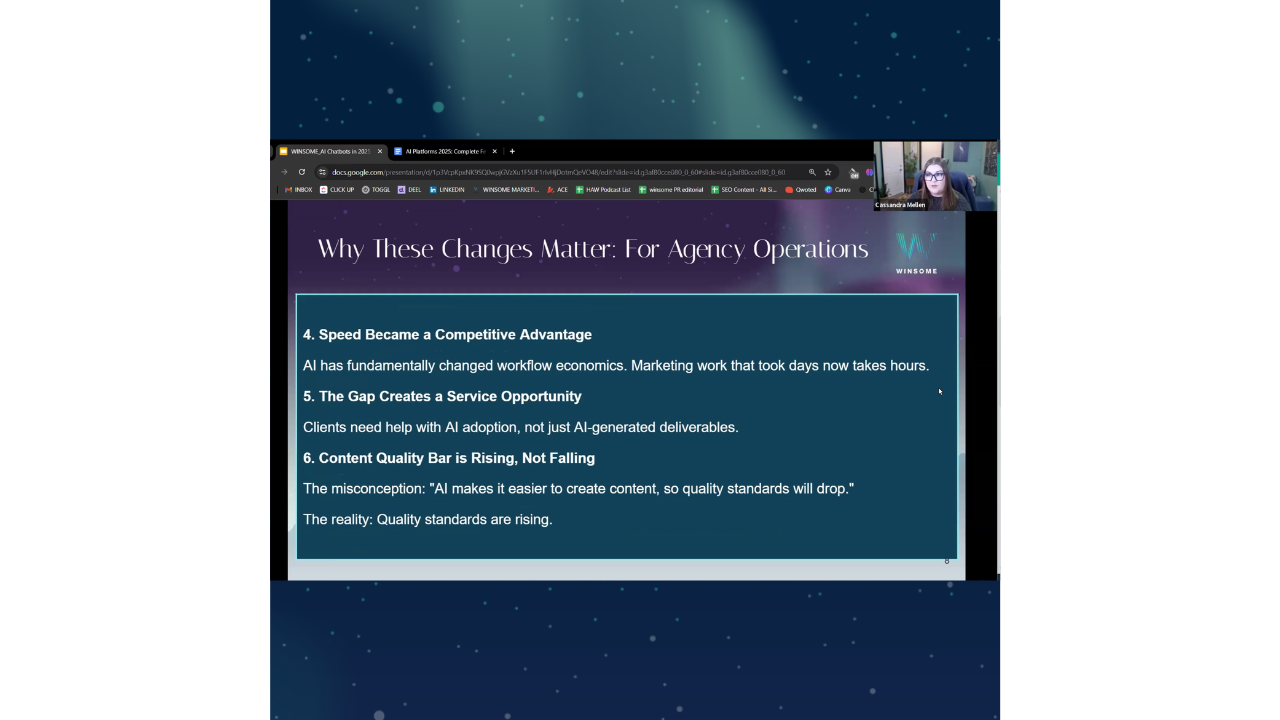Pick an AI Content Tool
Artificial intelligence has become an indispensable tool for content creators, marketers, and businesses alike. At Winsome Marketing, we've conducted...
.png)
Two prominent players have emerged as powerhouses in natural language processing and generation: Perplexity AI and ChatGPT. This comparison will cover the intricacies of both platforms, exploring their features, capabilities, use cases, and the unique advantages they offer to users across various domains.
Perplexity AI represents a new paradigm in search and information retrieval. Unlike traditional search engines that rely on keyword matching, Perplexity AI leverages advanced natural language processing to understand and respond to queries in a conversational manner. Here are some key features that set Perplexity AI apart:
Pricing: Perplexity AI offers both free and premium tiers, with the latter providing enhanced features and capabilities.
ChatGPT, developed by OpenAI, has taken the world by storm with its impressive language generation capabilities. Built on the GPT (Generative Pre-trained Transformer) architecture, ChatGPT offers a wide range of features:
Pricing: ChatGPT offers a free tier with basic functionality, while ChatGPT Plus provides enhanced features for $20 per month. API access is available on a pay-as-you-go basis.
When evaluating Perplexity AI versus ChatGPT, several key factors come into play:
To better understand the strengths and applications of both platforms, let's explore some real-world scenarios:
Kaitlin, a tech blogger, used both Perplexity AI and ChatGPT to assist in writing an article about SPRS (Supplier Performance Risk System) scores in cybersecurity.
Perplexity AI: Provided up-to-date information and relevant sources, allowing Kaitlin to quickly gather accurate data on SPRS scores and current cybersecurity benchmarks.
ChatGPT: Offered a comprehensive 800-word draft that incorporated a metaphor throughout the piece, making the technical content more engaging. Kaitlin expanded this draft to meet her 1000-word requirement.
Takeaway: The combination of Perplexity AI's current information retrieval and ChatGPT's content generation capabilities proved highly effective for creating an informative and engaging technical article.
Lauren, a marketing specialist in the photography industry, needed to create content on professional headshot styles.
Perplexity AI: Assisted in researching current trends in professional photography and provided insights into popular headshot styles across different industries.
ChatGPT: Generated a well-structured outline and initial content, albeit shorter than required and with some overly wordy phrasing. Lauren used this as a starting point, refining the language and injecting her brand's voice.
Takeaway: Perplexity AI's trend analysis combined with ChatGPT's content structuring capabilities offered a solid foundation for creating targeted marketing content.
Angela, a health and wellness content creator, needed to write about GLP-1 agonists and weight loss injections.
Perplexity AI: Provided the latest research findings and medical insights on GLP-1 agonists, ensuring the content was up-to-date and scientifically accurate.
ChatGPT: Generated a comprehensive article that explained the science behind GLP-1 agonists. Angela adjusted the tone to make it more conversational while maintaining accuracy.
Takeaway: The combination of Perplexity AI's current medical information and ChatGPT's explanatory capabilities resulted in an informative and accessible health article.
Both Perplexity AI and ChatGPT offer powerful capabilities that can significantly enhance content creation and information retrieval processes. Perplexity AI shines in its ability to provide up-to-date, cited information, making it invaluable for research, fact-checking, and staying current on rapidly evolving topics. ChatGPT, with its versatile language generation and creative capabilities, excels in content creation, brainstorming, and engaging conversational experiences.
The choice between Perplexity AI and ChatGPT ultimately depends on your specific needs:
In many cases, the most effective approach is to leverage both platforms, combining Perplexity AI's information retrieval strengths with ChatGPT's content generation capabilities. This synergy allows content creators to produce well-researched, engaging, and up-to-date material across various domains.
.png)
Artificial intelligence has become an indispensable tool for content creators, marketers, and businesses alike. At Winsome Marketing, we've conducted...

We had a problem. Actually, we had twelve problems, all neatly organized in a folder labeled "Lead Magnets." Each one was a beautifully designed PDF....

There's a misconception that AI makes it easier to create content, so quality standards will drop. The reality? They're rising.